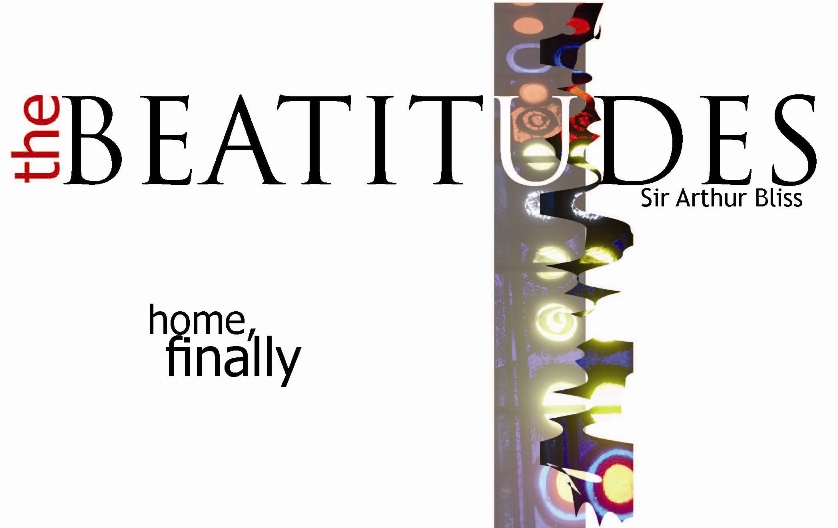PART ONE
When Bliss was first invited and commissioned to write a musical celebration to be performed after the Consecration of Coventry Cathedral, he was at the peak of his prolific career. He was an approved part of the establishment having spent a number of war time years as Assistant Director of Music at the BBC. And in 1953 he was appointed Master of the Queen's Music.
He might be said to have come ‘by Royal Appointment’ and was certainly befitting the importance of the global spotlight that was to shine on the occasion in May 1962.
The Bliss 'Welcome the Queen' March was the fruit of his work as Master of The Queen's Music, a position he took very seriously. He wrote the March for the Pathé newsreel to celebrate the return of young Queen Elizabeth from the incredible Commonwealth tour she undertook just a few months after her Coronation.
It was at this time (late ’58 / early ’59) that Arthur Bliss and his librettist friend Christopher Hassall were in the final stages of completing their opera for television Tobias and the Angel. This innovative work has received faint praise, but even though it may not have achieved all it set out to do it has at least – by putting to music such an exciting, spooky story – lowered the resistance of lowbrows and middle-brows to opera. [Raphael's Tobias and the Angel is pictured, right.]

The nature of its story (from the biblical Book of Tobias) turned out to be so fast and furious (with its depiction of a beautiful slave girl sold to syndicate of tired businessmen, underwater fights with sea monsters; spacemen chasing one another about the stars) that the music became mere background to the action.
He liked to be busy and worked best (though not always successfully) under pressure.
He liked to be busy and worked best (though not always successfully) under pressure.
Bliss could, of course, not have known this in 1959 but was already referring in his letters to 'the work for Coventry Cathedral'. The previous summer Bliss had referred, apparently in relation to the proposed masque, to 'choric songs in praise of stone, iron, wood and glass'.
As it transpired, the new cantata, which he alludes to in a letter of January 1960 - and apparently at that stage still conceived of as 'the Coventry Masque' – was not required until 1962. The lack of urgency allowed Bliss to consider other works – he took his eye off the Coventry City
Unbeknown to Bliss, Britten began to draw up his battle lines with the introduction of War Requiem.
The form and content of the work continued to give Bliss trouble: '[I] as yet cannot alight anywhere. Do I need something more dramatic, I wonder, to get me going?' Perhaps the lack of pressure of a deadline was a further disincentive, or had his disappointment at losing what he saw as the Consecration Festival’s principle commission altered his attitude to the whole project?
By October he promises better: '…yes, I must try and get my mind on the Beatitudes. But for the last 2 weeks I have endured my ‘low period’ when all I can do is lie prone and idly float over an abyss of nothingness. Far from unpleasant, but remote from anything connected with thinking and doing '.
A new scheme was proposed by Christopher Hassall and this ultimately found favour with Consecration Festival Committee. It was to be a setting of the nine ‘Beatitudes’ from St Matthew’s Gospel.
Hassall and Bliss subsequently evolved a cantata project as a series of reflective or mystical poems which, interspersed, would effectively serve as a comment, or form of meditation, on the biblical texts themselves.
Bliss was especially concerned about possible monotony in a purely reflective hour-long cantata, and sought to counter this by including at four points, as he puts it, 'a mood of violence (force opposing the beatific vision)'. This is evident in his letter to Hassall of 14 June, where he lays emphasis on this contrast: '…and always the reverse to be kept in mind – e g meekness-pride etc, mourning-dance of joy. I feel we can invent a new form – like a necklace with intervening jewellery'.
Both dug deep into their literary experiences (written and read) in search of inspiration.
O blessed Jesu, who art become to us the fountain of peace and sanctity, of righteousness and charity, of life and perpetual benediction,
Imprint in our spirits these glorious characterisms of Christianity,
That we by such excellent dispositions may be consigned to the infinity of blessedness, which thou earnest to reveal and minister and exhibit to mankind.
For thou, 0 holy Jesu, art our hope, and our life, and glory, our exceeding great reward.
JEREMY TAYLOR (15 August 1613 – 13 August 1667)
PART TWO follows shortly. In the mean time...
For more information read on...
(Short code to Coventry Cathedral website)




No comments:
Post a Comment